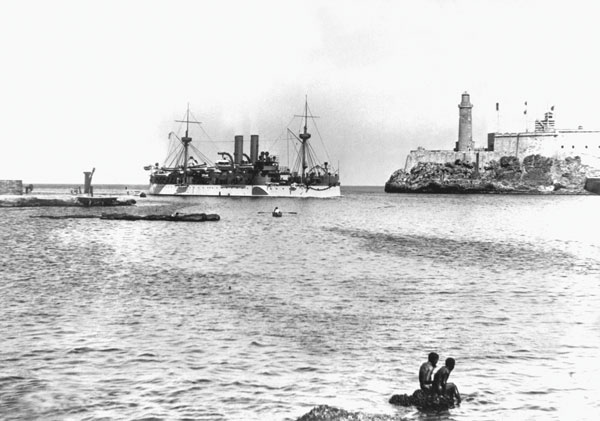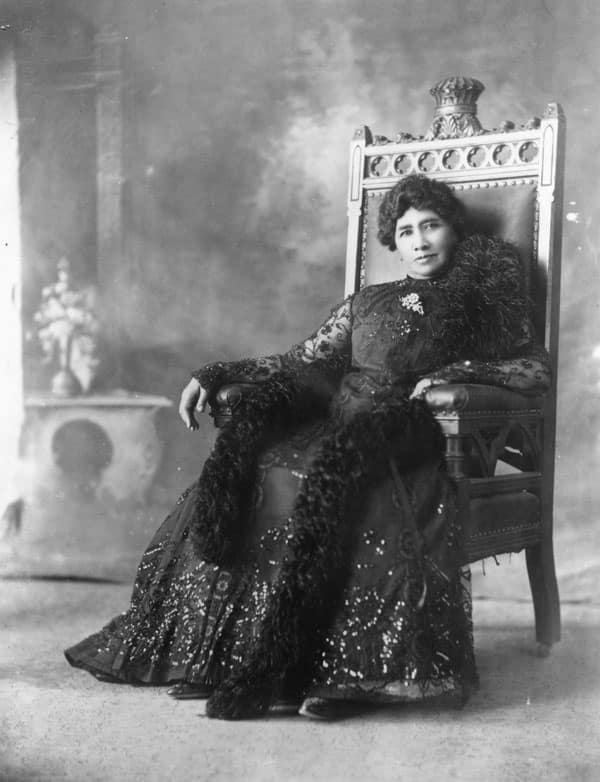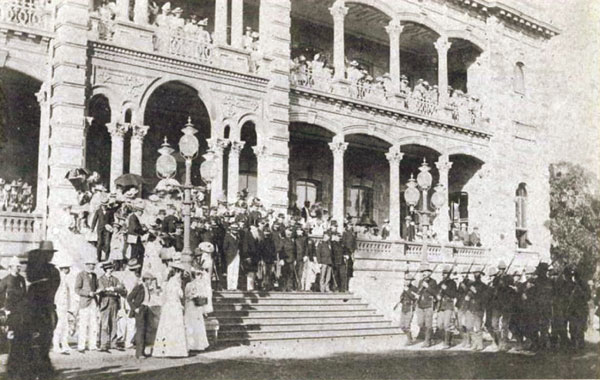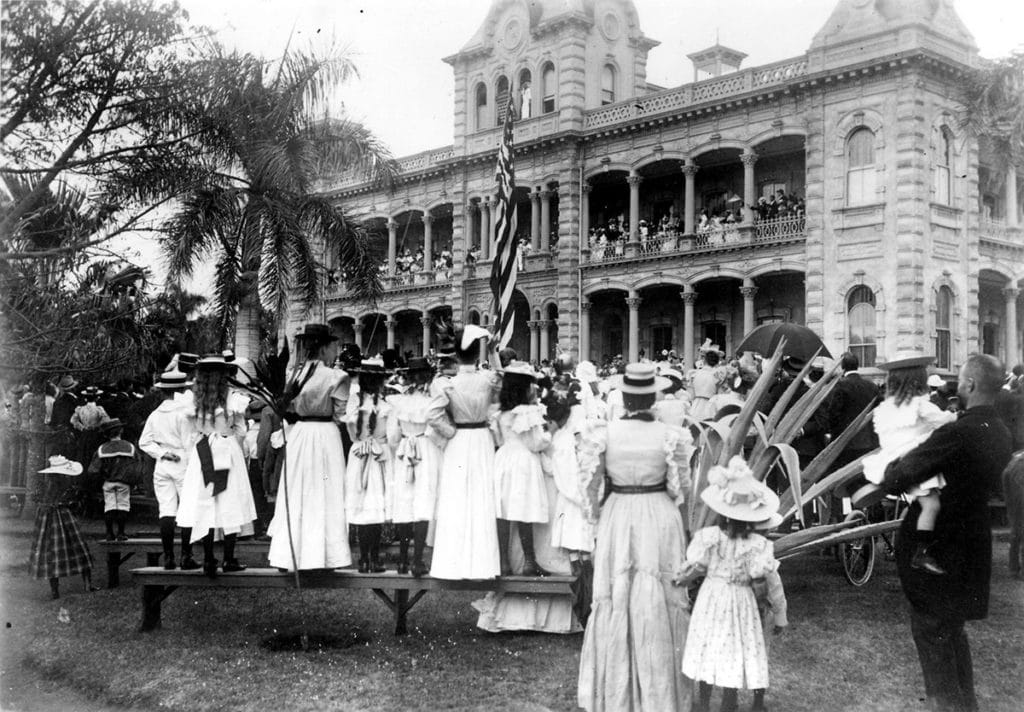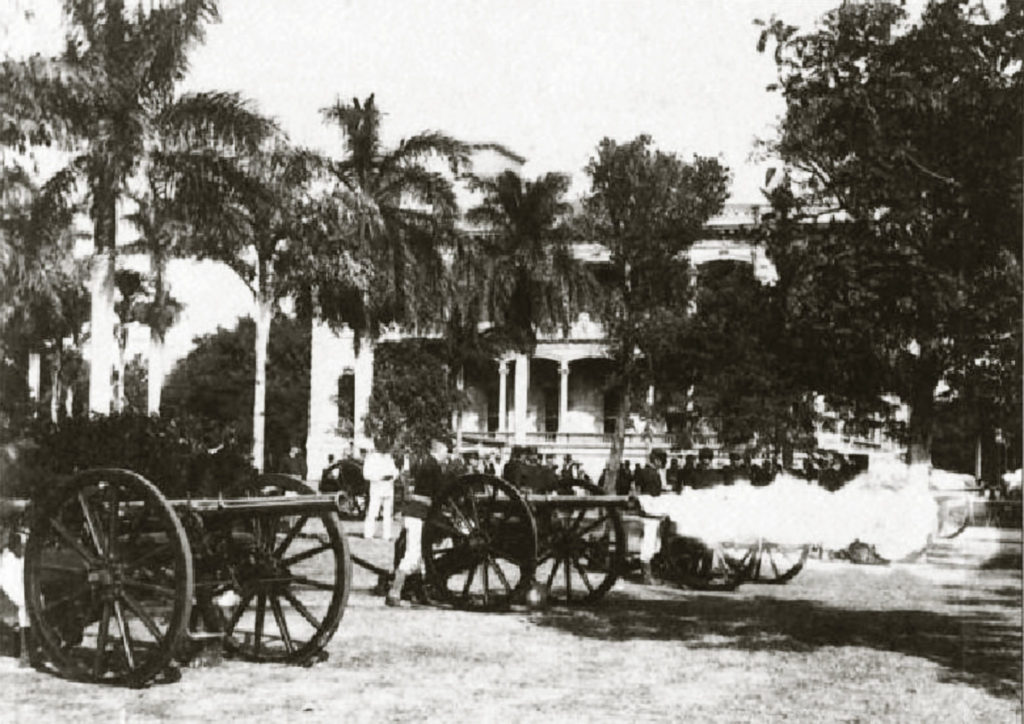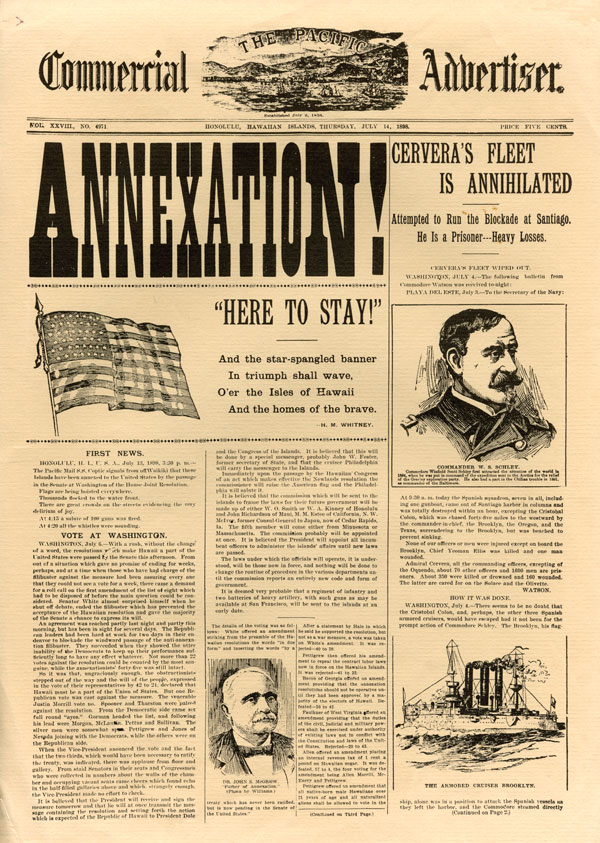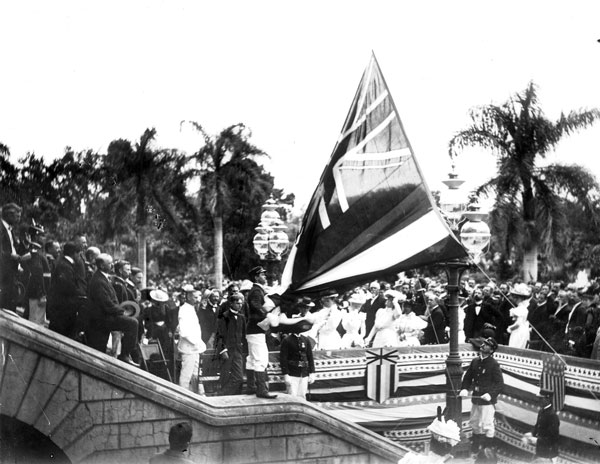Hawai‘i as a Territory
Something happened in 1898 that changed the picture very quickly. The United States battleship Maine was blown up by Spain in the bay of Havana, Cuba. It was then that the U.S. Congress declared war against Spain. It was clear that Honolulu would be an important stopover for American ships taking soldiers to the Philippine Islands to fight Spain. Friends of annexation used this opportunity. They showed the troops great hospitality when they stopped in Hawai‘i. The United States realized how useful Hawai‘i could be at the “Crossroads of the Pacific,” especially since it was now to be controlling the Philippines and what would become American Samoa. Thus, the stage was set for formal annexation.
To the leading group of Honolulu merchants, Americans and Europeans, who had worked for almost a decade to gain annexation, August 12, 1898, was a day of victory and a time for celebration. To Queen Lili‘uokalani, her supporters, and the Hawaiian people, it was a day of great sadness and the beginning of a time for despair. For the oligarchy (the small ruling class of businessmen and sugar planters), annexation meant a new beginning, an era of prosperity and almost unlimited economic and political power. For the Hawaiians, annexation marked the death of the dream of a restored monarchy.
The Republic’s President, Sanford B. Dole, took charge of a simple ceremony again in front of ‘Iolani Palace. He told the people that Hawai‘i no longer stood alone as an independent nation. Now it was an American Territory, a part of the United States. He read a paper signed by President McKinley accepting Hawai‘i as a territory. Former President Cleveland’s decision to return Hawai‘i to the Hawaiians was forgotten. The Hawaiian flag was slowly brought down from the top of the mast. “Hawai‘i Pono‘ī” was sung by the people. Then, the American flag took the place of the Hawaiian flag on the mast as the band played “The Star-Spangled Banner.” While to a great deal of individuals this event was a triumph, to many Hawaiians it was a tragedy. Many stayed home behind closed doors until the ceremony was over; they could not fight the power of the United States.
Thus was Hawai‘i brought into the United States as a territory. In Hawai‘i, conflicts from the overthrow of the monarchy remain today. The sovereignty movement is stronger than ever more than a hundred years later. But the history of Hawai‘i as an independent country came to an end in 1898. Under the American system of government, the next step after being a territory was statehood.
